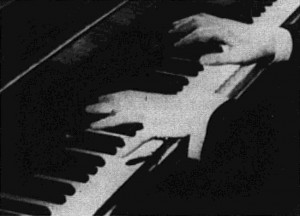
"This is a short story about a musician, a pianist who has enjoyed the pleasure and popularity of concerts in many cities of Europe. And then came the war! Even in the thick of battle, when his fingers must play a different keyboard, music does not leave his mind. The picture closes with the last concert, simple, but forceful in its emotional impact" PSA Journal, Nov. 1959, 48.
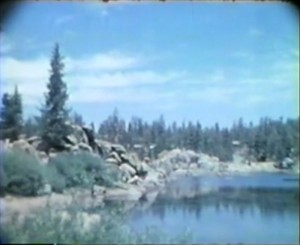
"An edited home movie by Arthur H. Smith of Smith's later years, living with his wife Blanche in Big Bear Lake, California, including a description of his filmmaking process." Archive.org
"The Last Review, by George A. Ward, ACL, is an almost faultless example of a military motion picture, into which is woven a story that has the rare quality of evoking deep emotion from the audience. Actually, the film is a record of the camp life of the 105th Field Artillery of the New York National Guard, in its summer instruction quarters at Pine Camp, N. Y. Dramatically, it is the story of a Field Artillery private soldier and his friend, the oldest horse in the regiment. Condemned to be shot because of age and the approaching motorization of the command, the horse is reprieved and is given a review by the entire regiment in honor of "the artilleryman's best friend." The tale was not fictional, but actual. The hero was a member of the regiment, he loved the veteran horse and the review was actually held, not for purposes of filming but as a tribute. The film ends with the review, while actually the reprieve was only temporary and the equine actor has since been destroyed because of age. In this film, Mr. Ward exhibited cinematography of high quality and much incidental beauty. He contrived, as well, to give a military record that errs in no detail and that has no false note. To crown it all, he filmed a scenario, in itself moving and acted with complete sincerity." Movie Makers, Dec. 1934, 534.
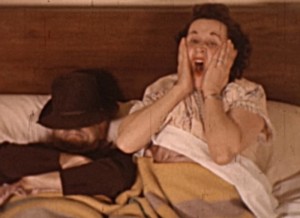
Comedy about a married couple who appear to have overslept once again.
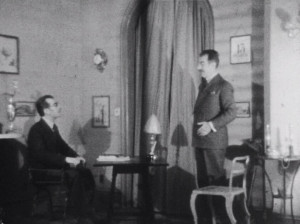
Filmmaker Émile Gallet plays dual roles in this film as a antique dealer offering a promotion for his store's thirteenth year, and a customer who attempts to cash in on the prize. The film is spliced in two to allow Gallet to perform against himself, and features hand-written intertitles in both French and English.
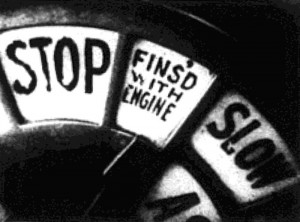
"Le Mort by Christopher T. Leggo of Oakland, California. Chris has taken the title, which means "The Dead" in French, and with black-and-white film made a very impressionistic, revealing film about a ship and her past glories. This 10-minute 16mm film won for him a Ten Best medal and the Golden Scissors Award for best editing" PSA Journal, Nov. 1970, 39.
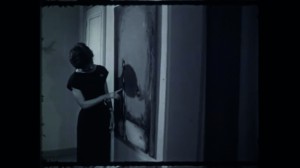
“İlk film çalışmalarını Paris’te gerçekleştiren Heper, Galatasaray Lisesi’nden mezun olduktan sonra önce hukuk okumak için Cenevre’ye gider lakin mutlu olamaz ve okulu bırakarak Fransa’ya geçip, Paris Yüksek Sinema Enstitüsü’de (Institut des Hautes Etudes Cinématographiques – IDHEC) sinema eğitimi almaya başlar. Bu okuldan ‘En İyi Yönetmen’ ünvanı ile mezun olan yönetmen, bu dönem (1963 yılında) gerçekleştirdiği iki kısa filminden ilki olan ‘Bir Kadın’ ile IDHEC, ikinci kısa filmi Şafak ile de hem IDHEC hem de Avusturya Kültür Bakanlığı En İyi Film ödülünü almıştır.” Burak Çevik, Sinematek.tv: http://sinematek.tv/alp-zeki-heper-ve-iki-kisa-filmi-bir-kadin-safak/ (15 November 2019).
“Graduated from Galatasaray Highschool, Heper who first involved in filmmaking in Paris initially went to Geneva to study law. Because he was unhappy in Geneva, he left the law school and went to Paris to study filmmaking at Institut des Hautes Etudes Cinématographiques (IDHEC). He graduated from IDHEC with the award, “the best director.” The two student short films, Bir Kadın and Şafak, made by Heper when he was at IDHEC, received the best film awards from both IDHEC and the Austrian Ministry of Culture. Burak Çevik, Sinematek.tv http://sinematek.tv/alp-zeki-heper-ve-iki-kisa-filmi-bir-kadin-safak/ (15 November 2019).
"Made by Mr. And Mrs. Chambers to advertise tea and to stimulate tea-drinking across Canada, and accompanied by a narrative by Mrs. Chambers, in English for English-speaking audiences and in French for French-speaking audiences. The equipment to make the film was loaned by the Dunne and Rundle camera shop in Vancouver, where the film was made.
"The puppet story is about a Princess who mysteriously falls asleep with an unknown disease, and her father, the King, who sends far and wide to discover a cure. Finally the Princess is revived with tea and the young man who brings it to her is rewarded with her hand in marriage. The sponsor of the film was the old Empire Tea Bureau, for whom the Chambers' worked during the 1930s." (Colin Browne, Motion Picture Production in British Columbia, 1898-1940 (1979), entry #0872.)
The film is listed in Browne's filmography as "Tea Bureau Puppet Show."
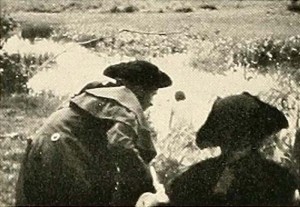
"The Least of These handles a difficult subject in a way which promotes the cinematic medium to a high position as a sympathetic interpreter of the afflicted. Ripley W. Bugbee has presented a fine understanding of the problem of those whose minds are crippled and has given a clear cinematic exposition of the humane methods used in one institution to bring to these persons, young and old, a productive happiness. The film opens with a historical presentation of the problem of feeblemindedness, in a sequence which is smooth and effectively handled in costuming and direction as well as in photographic technique. Passing on to modern times, the work of a present day institution is shown in all its aspects. The handling of the color medium is exceedingly well done, particularly in those ordinarily difficult shots of interior activities. The closeup work, showing details of the manual operations involved in craftsmanship, is unusual in quality. Well chosen angle shots add variety to the film, which is expertly titled in the Kodachrome medium." Movie Makers, Dec. 1937, 603.
Total Pages: 203